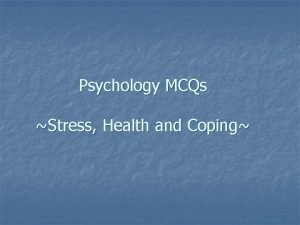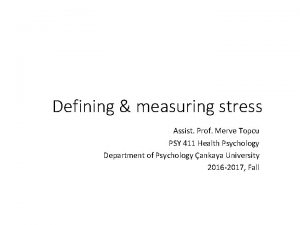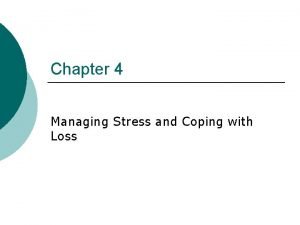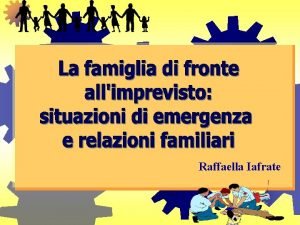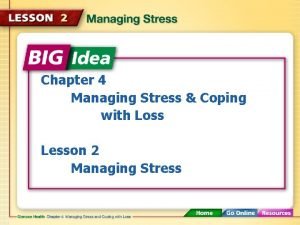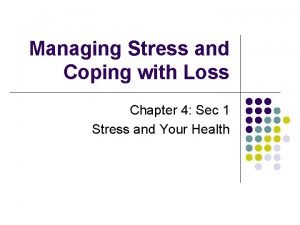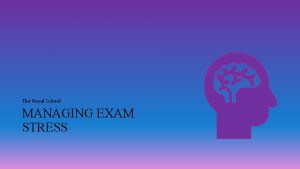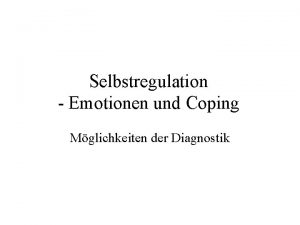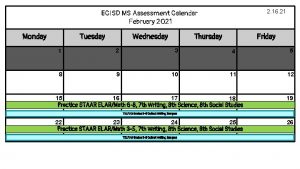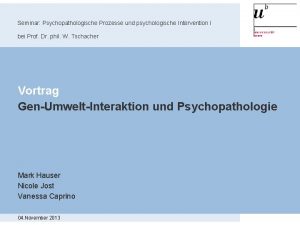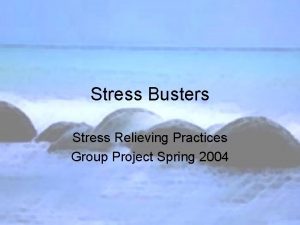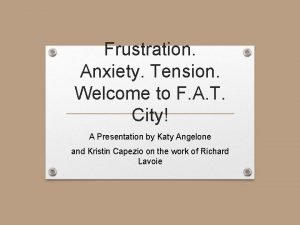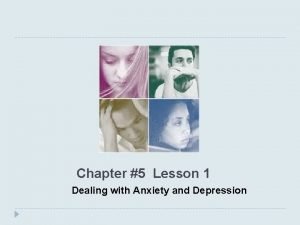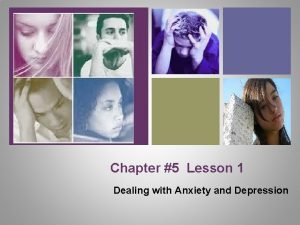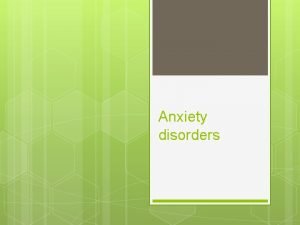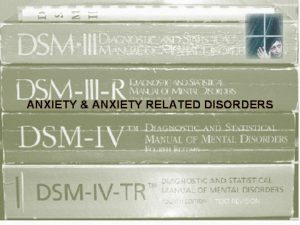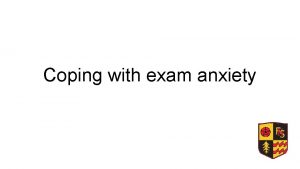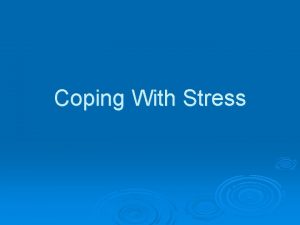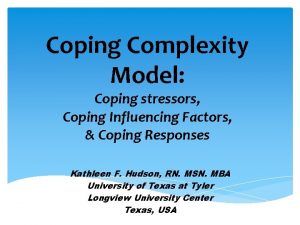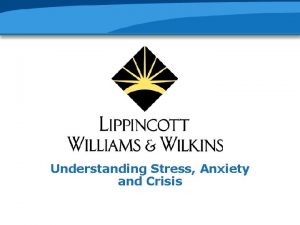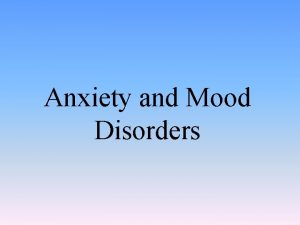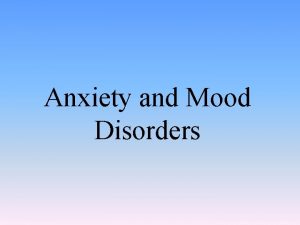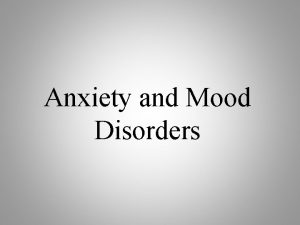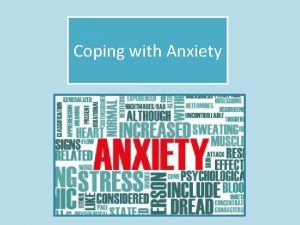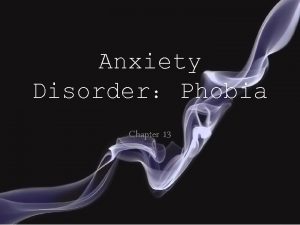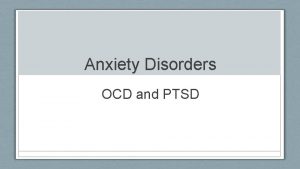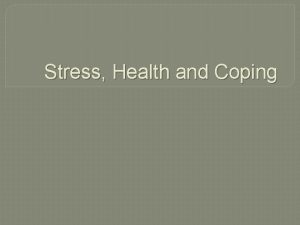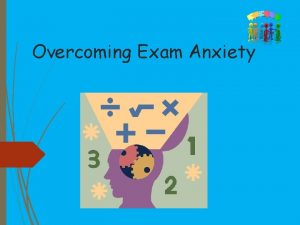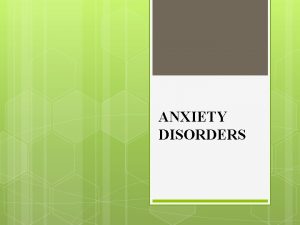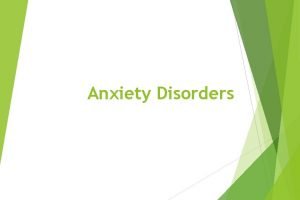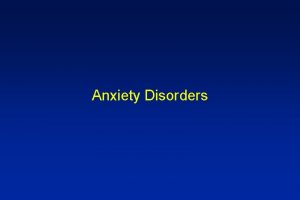Stress Anxiety and Coping Spring 2011 Stress A



























- Slides: 27

Stress, Anxiety, and Coping Spring 2011

Stress • A broad class of experiences in which a demanding situation taxes a person’s resources, or coping capabilities, causing a negative effect


Conflict Sources • • Unconscious needs Everyday and family life Social Issues Ethical Issues

Types of Conflict • Approach-Avoidance • Avoidance-Avoidance • Vacillation

Biopsychosocial Theories • Fight or Flight – Maladaptive – Physiologic stress

Life Change Theory of Stress • Life change units (LCU) • Holmes and Rahe Scale • Assumptions/cautions when applying theory to mental health

Assumptions/ Cautions • • • Same response to stress Common threshold for stress effect Same event = same stress Same amount of adaptation required Stress = change Some life events irrelevant to some people

Stress as a Transaction • • Primary appraisal Secondary appraisal Coping Reappraisal

Psychoneuroimmunology Framework • Self-healing personalities • Hardiness and health • Disease-prone personalities

Stress and the Immune System

Stress and the Immune System

Anxiety • Neurobiological basis • Measurable • Assessment – Emotional/behavioral – Physiological – Cognitive

Anxiety - continued • Levels of Anxiety – – Mild Moderate Severe Panic

Coping • Task-oriented – Problem solving • Defense-oriented – Protective

Coping Strategies • • Seeking comfort Relying on self-discipline Intense expression of feeling Avoidance and withdrawal

Coping Strategies - continued • • Talking it out Privately thinking it through Working it off Engaging in self-healing and mind/body practices

Coping Strategies - continued • Spirituality and prayerfulness • Symbolic substitutes • Somatizing

Coping Resources • Sense of Coherence -Comprehensible -Manageable -Meaningful • GRRs

Defensive Coping • Repression • Suppression • Dissociation • Identification • Introjection • Projection

Defensive Coping - continued • Denial • Fantasy • Rationalization • Reaction formation • Displacement • Intellectualization

Intervention Strategies • Repression/suppression – support, protect, and help client develop objectivity • Dissociation – help client recall and resolve past conflicts • Identification/introjection – clarify roles, assist with client self-care plan and selfawareness

Intervention Strategies - continued • Projection – respect, separate feelings from facts • Denial – discern protective function, then either support denial or focus on reality • Fantasy – focus on realistic plans and expectations

Intervention Strategies - continued • Rationalization – focus on strengths and past success • Reaction formation – respect and support, provide security • Displacement – focus on reason for anger • Intellectualization – explore emotional reactions

Influence on Stress Altered Course or Treatment • • • Psychiatric disorder Symptom Personality trait Coping style Maladaptive health behavior • Stress related physiologic response

Conditions with Psychological Components • • Cardiovascular Gastrointestinal Hormonal Immune Integumentary Neuromuscular and Skeletal Respiratory

The Challenge • As nurses work with individuals to increase their awareness of stress and improve health-promoting behaviors, they will find that these tasks are not always easy, nor do they always result in change.
 Anxiety goals for nursing care plan
Anxiety goals for nursing care plan Chapter 4 managing stress and coping with loss notes
Chapter 4 managing stress and coping with loss notes Concept of stress and coping mcqs
Concept of stress and coping mcqs Stress appraisal and coping
Stress appraisal and coping Chapter 4 managing stress and coping with loss lesson 1
Chapter 4 managing stress and coping with loss lesson 1 Family stress and coping
Family stress and coping Chapter 4 lesson 2 managing stress
Chapter 4 lesson 2 managing stress Chapter 4 managing stress and coping with loss
Chapter 4 managing stress and coping with loss Chapter 8 managing stress and anxiety
Chapter 8 managing stress and anxiety Anxiety symptoms
Anxiety symptoms Stress strain coping support model
Stress strain coping support model Coping strategies for exam stress
Coping strategies for exam stress Selbstregulation
Selbstregulation Stress anxiety depression
Stress anxiety depression Spring summer fall winter and spring cast
Spring summer fall winter and spring cast What are the months of spring?
What are the months of spring? Ecisd spring break 2011
Ecisd spring break 2011 Vulnerabilitäts-stress-modell nach zubin und spring
Vulnerabilitäts-stress-modell nach zubin und spring Spring stress relieving
Spring stress relieving True stress vs engineering stress
True stress vs engineering stress Chapter 10 stress responses and stress management
Chapter 10 stress responses and stress management Lesson 3 coping with loss and grief
Lesson 3 coping with loss and grief Feather core blockboard
Feather core blockboard Frustration anxiety and tension
Frustration anxiety and tension Chapter 15 anxiety and obsessive-compulsive disorders
Chapter 15 anxiety and obsessive-compulsive disorders Chapter 5 lesson 1 dealing with anxiety and depression
Chapter 5 lesson 1 dealing with anxiety and depression Chapter 5 lesson 1 dealing with anxiety and depression
Chapter 5 lesson 1 dealing with anxiety and depression Defensive stage interventions
Defensive stage interventions


